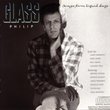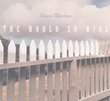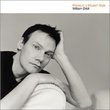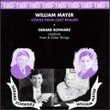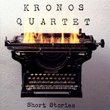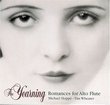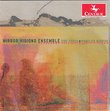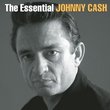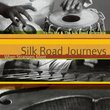| All Artists: Wallingford Riegger, Henry Cowell, Ruth Crawford Seeger, Lou Harrison, John [Composer] J. Becker, Aleck Karis Title: Cowell: Quartet Romantic Members Wishing: 1 Total Copies: 0 Label: New World Records Release Date: 4/28/1998 Genre: Classical Styles: Chamber Music, Historical Periods, Classical (c.1770-1830) Number of Discs: 1 SwapaCD Credits: 1 UPC: 093228028529 |
Search - Wallingford Riegger, Henry Cowell, Ruth Crawford Seeger :: Cowell: Quartet Romantic
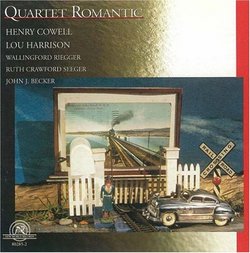 | Wallingford Riegger, Henry Cowell, Ruth Crawford Seeger Cowell: Quartet Romantic Genre: Classical
|
Larger Image |
CD DetailsSimilarly Requested CDs
|
CD ReviewsShades of grey Discophage | France | 05/26/2007 (3 out of 5 stars) "This New World CD collates the partial contents of two LPs. NW 285 was published in 1978 and had Ruth Crawford's Three Songs in addition to the Wind Quintet of Wallingford Riegger, Cowell's Quartet Romantic and John Becker's "The Abongo". NW 319 was released in 1984 and, other than Cowell's Paragraphs, Crawford's Suite No. 2 and Lou Harrison's Trio (played by an ensemble credited back then as the "New Music Consort", but not anymore on the CD reissue), also had Cowell's Pulse for Percussion Sextet and Cage's Third Construction for Percussion Quartet.
All these composers are somehow linked to one another. Wallingford Riegger and John J. Becker are the two less reputed members of the group know in the 1920s as the "American Five", along with Ives, Ruggles and Cowell. Cowell met Ruth Crawford in the early 1920s. In 1929, already an accomplished modernist composer, she began study with the famous composer and theorist Charles Seeger, father of the concept of "dissonant counterpoint" (they eventually married in 1932) - with whom Cowell; self-taught in composition in his youth, had taken music lessons in the mid-1910s. Harrison in turn was a student of Cowell in the early 1930s and, as Cowell's most famous other student John Cage, he was very much influenced by the research and experimentation in sound and rhythms of his teacher. These composers share not only these personal ties but also a broad common compositional outlook. Other than Harrison, they are among the early generation of American experimentalists active in the 1920s, introducers of the Schoenbergian twelve-tone system (Riegger), adept at dissonant counterpoint (Becker, Crawford, Cowell), experimentators in sound and rhythm (Cowell again, Harrison). In the short pieces represented here (at 17 minutes Cowell's Quartet Romantic is the longest, but otherwise they range from 4:50 to 9:40), they are also featured in an austere, stern, serious, unseductive compositional face, painting their musical canvass with various shades of grey. Cowell's Quartet Romantic for two flutes, viola and cello (1915-17) is the most experimental piece of the lot, a "demonstration of theoretical principles" as the liner notes aptly put it, an essay in non-binary time signatures and independent, atonal part writing, so much so that Cowell considered the piece "humanly impossible to play" - at least without the help of some new electronic resources that existed neither at the time of composition nor even at the time of publication (1964). But in 1978, the use of headphones, click-tracks and a painstaking process of repetition resulted in this recording. To my ears the result sounds remarkably faithful to the concept: independently flowing, atonal melodic lines of greyish contour, a busy line here over a more appeased one there, the whole sounding pretty arbitrary and uningratiating. Lots of work for a disappointing result - as often with experiments, error is a necessary outcome of trial. Cowell's Seven Paragraphs for string trio date from 1925 and are couched again in a stern, severe dissonantly contrapuntal language, reminiscent of the Schoenberg-influenced German expressionists like Krenek. The movements are not cued. Riegger wrote throughout his compositional career in a variety of styles, from Romantic and Impressionist to twelve-tone. His Wind Quintet from 1952 is a perky, atonal little fantasy (6:30) full of canonic figures and a Janacek or Stravinsky-like rhythmic vigor. Not substantial, but pleasant. A good introduction to Riegger is the CRI CD of his works: Riegger: Symphony No3, Romanza, Dance Rhythms, Music for Orchestra, Concerto for Piano and Woodwind Quintet, Music for Brass Choir, Movement for Two Trumpets Trombone and Piano, Nonet for Brass. For reasons unexplained Ruth Crawford's Suite No. 2 for Four Strings and Piano from 1929 remained unpublished and this was its first recording. It is echt-Crawford, severe, atonal, brooding in mood and at times rising to the massive unison climax, rhythmically robust in the 3rd movement (4:53), contrapuntally elaborate. She is at her best I find in the slightly zany whimsicality of the 2nd movement (3:00). The movements are not cued. Lou Harrison's brief (4:45) String Trio in one movement shares all those stylistic traits with Cowell's Paragraphs and Crawford's Suite - the atonality, the contrapuntal activity, the brooding and almost depressed mood - except for the occasional outbursts that give at least some feeling of contrast to the compositions of his predecessors. Becker's "The Abongo" is stylistically the "odd-piece out" in this collection. Composed in 1933 and subtitled "A Primitive Dance", it is a percussion work much in the wake of the highly influential "Ionisation" of Edgar Varèse (1931). But its rhythmic squareness, while producing considerable adrenalin, and its call for hand claps then gruff shouts from the performers, sound embarassingly like a naïve and vaguely condescendant Western cliché of African music at the times of the West's discovery of and infatuation for "Art Nègre". A good introduction to Becker - a composer in desperate need of a (re)discovery - is on The Louisville Orchestra-First Edition Encores, with his 3rd Symphony "Symphonia Brevis". " |

 Track Listings (6) - Disc #1
Track Listings (6) - Disc #1